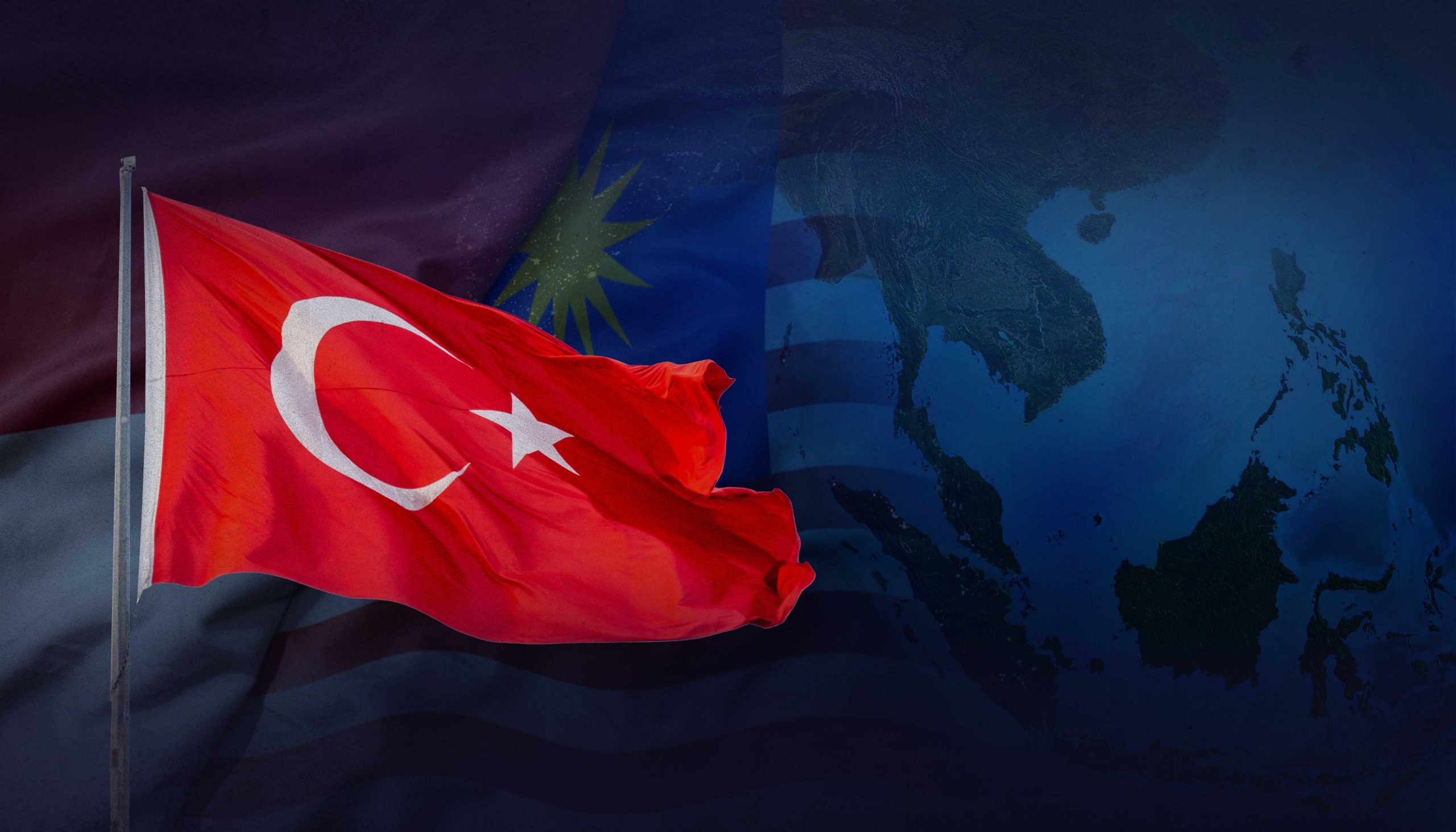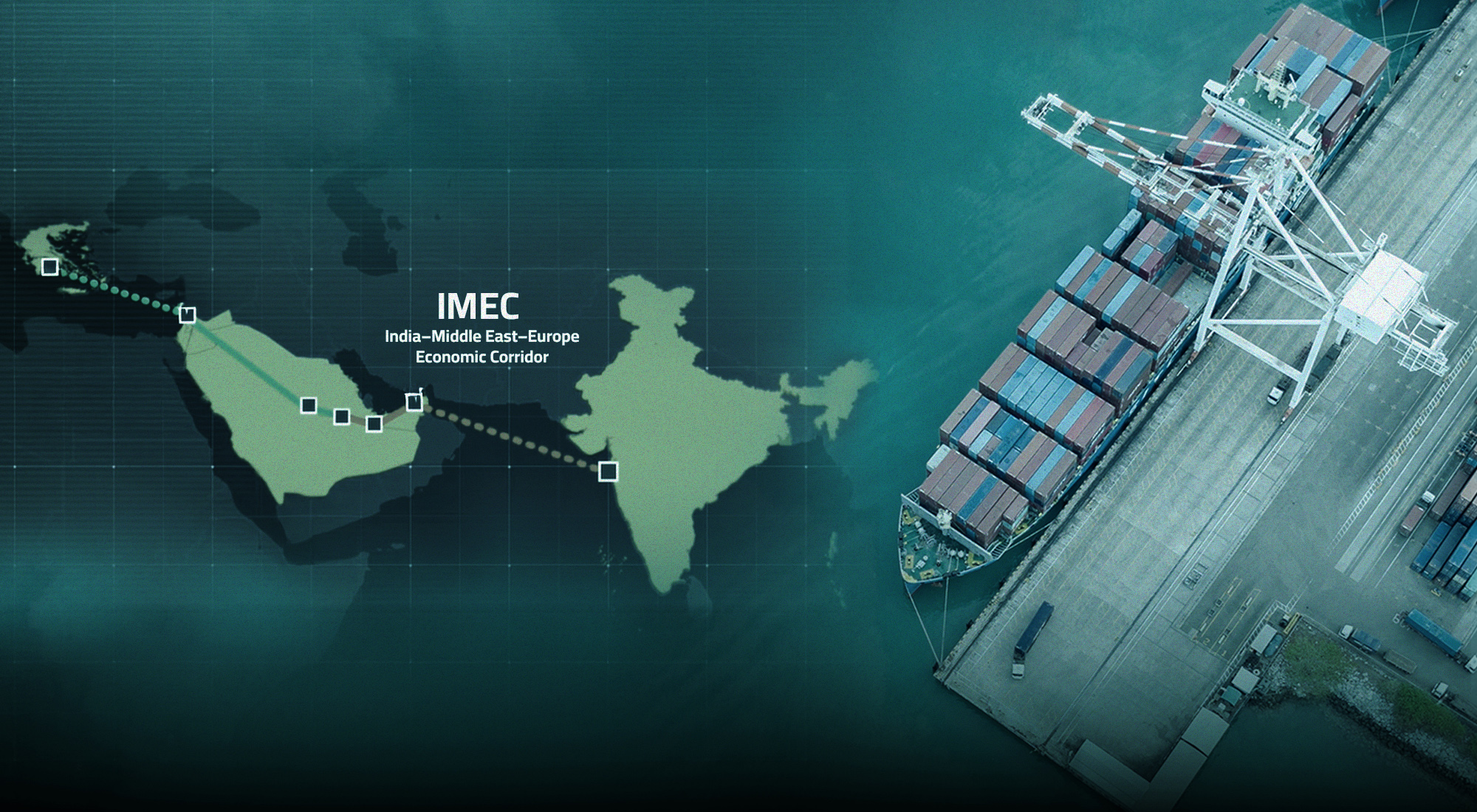In the dynamic and rapidly shifting security landscape of Southeast Asia, the quest for military modernization, strategic autonomy, and diversified partnerships has become paramount for regional powers navigating an era of great power competition. At the intersection of these emerging factors stands Türkiye, a nation with a burgeoning defense industry and an increasingly assertive global footprint. As the balance of power continues to evolve amidst the uncertainties of recent developments on a global scale, Türkiye’s engagements with Indonesia and Malaysia offer a compelling lens through which to examine the transformation of regional defense dynamics, the recalibration of national strategies, and the emergence of new models of international cooperation.
Indonesia, one of the region’s largest nations and a linchpin of ASEAN, has long sought to modernize its military while balancing the demands of sovereignty, development, and regional leadership. Its recent agreement with Türkiye to procure 48 KAAN fifth-generation fighter jets marks not only a monumental defense contract for Turkish military history but also a significant leap for Jakarta’s long-term ambitions. This partnership is not restricted to the transfer of advanced hardware; it is a multifaceted endeavor encompassing technology transfer, co-production, and the establishment of a domestic aerospace capability. In the context of Indonesia’s historical reliance on foreign suppliers and its acute awareness of regional flashpoints like Taiwan and the South China Sea, this deal holds transformative potential. It signals Jakarta’s intent to cultivate a more self-reliant, technologically advanced, and strategically independent defense apparatus, while at the same time allowing Türkiye to assert itself as a credible competitor to established Western, Russian, and Chinese players in the Indo-Pacific.
Parallel to this, Malaysia—a pivotal maritime nation at the crossroads of the South China Sea and the Strait of Malacca—faces its own set of strategic imperatives. The intensifying rivalry among great powers and enduring disputes over maritime boundaries have compelled Kuala Lumpur to pursue a path of defense diversification, capability enhancement, and prudent diplomacy. Türkiye, with its proven record in unmanned aerial vehicles, shipbuilding, and flexible defense contracting, has emerged as a natural partner. Malaysia’s acquisition of Turkish-developed ANKA-S unmanned aerial systems, the proposed integration of Turkish-designed multirole vessels, and the adoption of sophisticated corvettes and advanced weapons systems underscore a broader trend: the willingness to collaborate with partners who are prepared to embed technology, foster local industry, and reassess national sovereignty amidst growing risks. These developments not only strengthen Malaysia’s operational capabilities but also contribute to the development of indigenous expertise and a more robust, sustainable military-industrial complex.
At the heart of both cases lies a common thread: Turkish defense engagement is characterized by its emphasis on co-development, technology transfer, and the forging of mutually beneficial, politically non-restrictive partnerships. This approach stands in marked contrast to many Western models, which often impose political conditions or restrict sovereignty. Türkiye’s willingness to negotiate on equal terms and to adapt to the specific needs of its partners has become a distinctive hallmark, enabling it to carve out a unique position in a crowded and competitive market.
This insight explores Türkiye’s rising influence in Southeast Asian defense through its evolving partnerships with Indonesia and Malaysia. It delves into the context of acquisitions, the strategic motivations of buyers, the operational dimensions of usage, and the broader geopolitical implications of these collaborations. In doing so, it sheds light on the new patterns of defense cooperation emerging in the region, the opportunities and challenges inherent in Turkish engagement, and the prospects for a more balanced and resilient security architecture in Southeast Asia.
Indonesia: An export model for KAAN
Türkiye’s agreement with Indonesia to supply 48 KAAN fifth-generation fighter jets represents the largest defense export contract in Turkish history.[1] While this marks a major leap in high-tech aerospace cooperation, it also builds on earlier defense ties, most notably the successful export of the Kaplan MT medium tank, jointly developed by Türkiye’s FNSS and Indonesia’s PT Pindad,[2] which underscored Ankara’s capacity for co-design and joint manufacturing tailored to local needs. The significance of the KAAN arrangement thus transcends the impressive figures: it marks Türkiye’s decisive entry into a region historically influenced by major powers such as the United States, Russia, and China, carving out a distinctive space for Ankara in the Indo-Pacific’s evolving security architecture.
The KAAN agreement is extraordinary for several interrelated reasons. First, it signals Türkiye’s move from exporting relatively lower-cost but highly effective products such as UAVs and UCAVs toward the high-value, technologically sophisticated realm of manned fighter jets. The KAAN deal is not just about the sale of military hardware; it establishes Türkiye as a credible supplier of advanced defense technology at its peak, capable of competing with established industry giants like Lockheed Martin and Dassault Aviation.
For Indonesia, the world’s fourth most populous country, the largest Muslim nation, and a member of influential multilateral groups such as BRICS, ASEAN, and the G20, the acquisition of KAAN jets is a pivotal step in its long-term military modernization strategy. Indonesia’s defense budget has historically hovered below the one percent mark of its GDP—a limitation that has, until recently, constrained Jakarta’s ability to upgrade its armed forces. However, regional competition, evolving security threats, and the growing need to assert national sovereignty—especially in the context of South China Sea disputes and increased great power rivalry—have spurred Indonesia to rethink its defense posture.[3]
Indonesia’s air force, the Tentara Nasional Indonesia-Angkatan Udara (TNI-AU), currently operates a fleet primarily composed of Russian Su-27 and Su-30 fighters, as well as aging American F-16s. The limitations of these older platforms, both in terms of technology and sustainability, have long been a concern for Jakarta, which already struggles with its defense capabilities. The procurement of KAAN aircraft, which boasts cutting-edge avionics, stealth capabilities, and a high degree of mission flexibility, is thus a transformative upgrade that aligns directly with Indonesia’s modernization goals.[4]
The agreement’s full value remains confidential, but industry sources estimate it exceeds US$10 billion. Beyond sheer numbers, the contract is remarkable for its scope: the partnership includes not just the delivery of fully operational jets, but also substantial technology transfers and the establishment of a KAAN production line within Indonesian territory. This model is designed to foster domestic capacity, reduce long-term dependence on foreign suppliers, and cultivate a cadre of skilled Indonesian defense engineers and technicians.
Such an arrangement significantly differentiates Türkiye from Indonesia’s other defense partners. While Jakarta has orders pending with France for Rafale jets and has explored possibilities with Chinese suppliers, neither has offered the scale of co-production and technology transfer promised by Ankara. For Indonesia, this is a crucial consideration. Co-production not only supports the country’s aspirations for self-reliance in defense but also contributes to national economic and technological development. For Türkiye, it is a strategic maneuver to lock in long-term partnerships and deepen influence in a region where trust and mutual benefit are paramount.
The KAAN deal also aligns with Türkiye’s broader strategy of offering “no-strings-attached” defense cooperation. Unlike many Western suppliers, Ankara does not tie sales to explicit political conditions or restrictive end-use monitoring. This nuanced approach resonates powerfully with countries like Indonesia, which seek to maintain strategic autonomy amid an environment of intensifying great power rivalry in a volatile region. Türkiye’s willingness to engage on equal footing, respecting sovereignty and prioritizing mutual benefit, sets a precedent that will likely appeal to other nations navigating similar constraints.
Indonesia’s landmark purchase of the KAAN is poised to have a ripple effect beyond bilateral ties. As a leading voice in ASEAN and a regional power broker, Jakarta’s procurement decisions are closely watched by its neighbors. If Indonesia’s co-production venture with Türkiye proves successful—especially in terms of operational performance, technology transfer, and economic impact—it may encourage other Southeast Asian countries to explore similar arrangements with Ankara.
This dynamic comes at a time when the region’s strategic environment is in flux. The South China Sea has become a flashpoint for competing territorial claims and naval build-ups. Great power competition between the United States and China has made longstanding defense relationships more complex, with many ASEAN members seeking to diversify their arms suppliers and reduce overreliance on any single partner. In this context, Türkiye’s entry as a competitive, technologically advanced, and diplomatically flexible supplier is especially timely.
Moreover, the KAAN initiative is emblematic of a broader trend in Turkish defense exports. Having established itself as a world leader in drone technology—a reputation cemented by the success of the Bayraktar TB2 in various theaters of conflict—Türkiye is now moving up the value chain, leveraging indigenous innovation and production capabilities to become a full-spectrum supplier. The KAAN program, developed by Turkish Aerospace Industries (TAI), represents the culmination of years of investment in research and development, as well as close collaboration between the Turkish government and the private sector.
All this notwithstanding, the partnership between Türkiye and Indonesia is not without its challenges. The successful delivery and integration of 48 fifth-generation fighter jets over a ten-year period will require robust logistical planning, sustained political will, and the ability to navigate inevitable technical and financial hurdles. Ensuring that co-production truly delivers on its promise—to transfer meaningful skills and technology rather than simply assembling parts—will be a test of both parties’ commitment. This is KAAN’s first export agreement, and Indonesia will serve as the litmus test as to whether the units are indeed ready to be utilized not only by Türkiye but a score of other nations.
There is also the question of interoperability with Indonesia’s existing fleet and broader defense network. Transitioning from a mix of Russian and American aircraft to a new Turkish platform will necessitate significant investments in training, maintenance, and infrastructure. However, the inclusion of technology transfer and local production facilities in the contract is designed to mitigate precisely these challenges, embedding support systems within Indonesia and fostering long-term sustainability.
Türkiye’s strategic engagement with Indonesia, crystallized in the KAAN fighter aircraft agreement, is a pivotal moment in the evolution of both countries’ defense postures. For Türkiye, it is a validation of its ambition to become a premier global defense supplier and a catalyst for deeper engagement across Southeast Asia. For Indonesia, it is a bold step toward modernization, self-reliance, and enhanced security in an increasingly contested region.
The KAAN export model, with its emphasis on co-production, could well become the blueprint for Türkiye’s future partnerships—not just in Southeast Asia, but wherever countries seek to balance the imperatives of autonomy and strategic partnership. As the region—and the world—watches closely, the Türkiye-Indonesia defense partnership stands as an exemplar of how innovative agreements can reshape the contours of international security and industrial cooperation, even in seemingly remote geographic conditions.
Malaysia: Balancing Rivalries in the South China Sea
While Indonesia’s historic collaboration with Türkiye marks a significant milestone in Southeast Asia’s defense landscape, Malaysia offers an equally compelling case of Ankara’s expanding influence in the region. As the second-largest economy in ASEAN and a maritime nation straddling the South China Sea, Malaysia finds itself at the epicenter of regional tensions and strategic recalibration. Its unique position requires deft navigation between major powers, and recent years have seen Kuala Lumpur actively seeking to diversify its defense relationships and modernize its military capabilities—efforts in which Turkish engagement has become increasingly essential. Notably, Turkish National Intelligence (MİT) Director İbrahim Kalın, who earned his master’s degree in Islamic thought from Malaysia’s International Islamic University in 1994, is seen as a pivotal figure in fostering this growing bilateral relationship, given his deep understanding of Malaysia’s sociopolitical landscape.
The strengthening of Malaysia-Türkiye defense ties has unfolded across several dimensions. At the diplomatic level, high-level exchanges—most notably President Recep Tayyip Erdoğan’s state visit to Kuala Lumpur[5]—have signaled a deepening commitment to bilateral cooperation. These visits have been accompanied by tangible outcomes, with both governments formalizing agreements aimed at fostering joint research, technology transfer, and co-development of defense systems. The signing of a Memorandum of Understanding (MoU) at Istanbul’s prestigious International Defense Industry Fair (IDEF) in 2025 exemplifies this intention,[6] reflecting a shared vision for collaborative innovation and mutual benefit. Notably, Indonesia’s final agreement to acquire KAAN fighter jets was also sealed at this landmark event, underscoring the fair’s role as a regional nexus for Turkish defense diplomacy.
On the operational front, Malaysia has taken concrete steps to integrate advanced Turkish defense technologies into its armed forces. Central to this modernization drive is the procurement of the ANKA-S Medium Altitude Long Endurance Unmanned Aerial System (MALE-UAS),[7] developed by Turkish Aerospace Industries (TAI). Scheduled for delivery by March 2026, these unmanned systems represent a vast leap in Malaysia’s intelligence, surveillance, and reconnaissance (ISR) capabilities. With the South China Sea witnessing unprecedented levels of activity—including assertive maneuvers by the Chinese Coast Guard and maritime militia near critical Malaysian oil and gas platforms in the Luconia Shoals and Vanguard Bank—there is an acute need for persistent, real-time situational awareness. The deployment of Turkish MALE-UAS platforms is designed not only to bolster maritime domain awareness but also to serve as a force multiplier for the Royal Malaysian Air Force and Navy, enabling enhanced monitoring of the nation’s vast and vulnerable maritime boundaries.
Türkiye’s entry into Malaysia’s defense procurement calculus is not limited to unmanned systems. The Royal Malaysian Navy has embarked on an ambitious program to reinforce its blue-water capabilities, and Turkish shipbuilders have emerged as key partners in this endeavor. Istanbul Shipyard’s Multirole Support Ship[8] (MRSS) has been proposed as a cornerstone of Malaysia’s efforts to revitalize its aging fleet and improve amphibious operational readiness. The vessel, valued at US$68.8 million and slated for delivery within 24 months, extends operational endurance—up to 30 days at sea—and its capacity to carry 70 crew + 30 additional personnel underscores its utility in sustained operations across Malaysia’s vast maritime domain.[9] The MRSS program envisages the acquisition of three versatile vessels, each capable of supporting a range of missions—from humanitarian assistance and disaster relief to power projection and naval logistics. Turkish design and engineering, characterized by a focus on modularity, survivability, and interoperability, mesh well with Malaysia’s desire for flexibility and long-term sustainability.
In tandem with these initiatives, Türkiye and Malaysia have inked agreements for the procurement of three Littoral Mission Ship (LMS) Batch 2 corvettes, modeled on the MİLGEM Ada-class design. These sophisticated warships are slated to feature cutting-edge Turkish systems, including Aselsan CENK 400-N AESA radar, Roketsan ATMACA anti-ship missiles, and Aselsan GÖKDENİZ 35mm Close-In Weapon System (CIWS). The selection of Turkish solutions, with STM serving as the main contractor, reflects Malaysia’s confidence in Ankara’s ability to deliver cost-effective, high-performance platforms tailored to Southeast Asian operating environments.
The broader geopolitical context makes Malaysia’s engagement with Türkiye especially consequential. As U.S.-China competition intensifies, Southeast Asian states have become wary of becoming pawns in a great power chess game. For Malaysia, the imperative is clear: to maintain strategic flexibility, avoid overdependence on any one supplier, and retain the autonomy to shape its own security trajectory. Turkish defense exports, characterized by the absence of restrictive political conditions and a willingness to adapt to local needs, dovetail with these aspirations. Ankara’s constructive approach resonates in a region that prizes sovereignty, pragmatism, and long-term partnership over rigid alliances.
The evolving Malaysia-Türkiye defense relationship mirrors—and, in some respects, reinforces—the dynamics shaping Indonesia’s collaboration with Ankara. Both cases highlight the appeal of Turkish co-production, technology transfer, and flexible contracting in an era of uncertainty and rapid change. As Malaysia prepares to receive its first Turkish-made platforms and embarks on a transformational upgrade of its naval and intelligence gathering assets,[10] like Indonesia, it is positioning itself as a trailblazer for others in ASEAN.
Malaysia’s comprehensive embrace of Turkish defense solutions underscores not only the breadth of Ankara’s technological capabilities but also the resonance of its diplomatic and commercial strategy. The deepening partnership, rooted in mutual respect and shared interests, stands as a compelling example of how innovative international agreements can empower regional actors and contribute to a more resilient, balanced security architecture in Southeast Asia.
Conclusion
Türkiye’s deepening engagement with Indonesia and Malaysia marks a consequential moment in both the evolution of its defense industry and the strategic trajectory of Southeast Asia’s leading middle powers. Each partnership, while unique in its details, reflects convergent priorities—modernization, sovereignty, strategic diversification, and the drive for technological self-sufficiency. These bilateral relationships, rooted in pragmatic cooperation and mutual benefit, offer valuable insights into the changing nature of global defense markets and the shifting calculus of regional actors determined to assert greater agency amidst external pressures.
For Indonesia, the decision to procure 48 KAAN fifth-generation fighter jets from Türkiye—complete with technology transfer, co-production, and local assembly—represents far more than an ambitious military acquisition. It is a bold statement of national intent: a move to break away from the constraints of legacy systems and great power dependency and to position Jakarta as a leading regional air power with indigenous capacity. The collaboration with Türkiye is poised to serve as both a benchmark and a bellwether for future defense partnerships in ASEAN, demonstrating how technology-driven, partnership-oriented models can bridge the gap between aspiration and capability.
Malaysia’s multifaceted embrace of Turkish defense solutions—ranging from battle tanks and advanced UAVs to modular naval platforms and high-end corvettes—underscores the resonance of Ankara’s flexible, locally focused approach. These outcomes are particularly meaningful at a time when Malaysia, like many of its neighbors, seeks to hedge its position, avoid strategic entanglements, and chart an independent course amidst the crosscurrents of U.S.-China competition.
At a broader level, Türkiye’s successful entry into Southeast Asia’s defense landscape is emblematic of a wider realignment in global security cooperation. It testifies to the growing relevance of “middle power” diplomacy, the importance of tailored, context-sensitive arrangements, and the appeal of partnerships that privilege adaptability. By avoiding strict conditionality and providing substantive avenues for local empowerment, Türkiye has established a novel framework that may serve as a reference point for other emerging defense actors aiming to transcend traditional supplier-client dynamics.
Yet, the path forward is not without challenges. The sustainability of these partnerships will depend on effective implementation, genuine knowledge and technology transfer, and the ability to navigate inevitable operational and political uncertainties. Both Indonesia and Malaysia will need to ensure that their engagement with Türkiye yields not only immediate gains in capability but also lasting dividends in terms of indigenous expertise and strategic autonomy.
In sum, the triangular dynamic between Indonesia, Malaysia, and Türkiye is reshaping the defense calculus of Southeast Asia. It is a case of ambition, adaptation, and innovation—a testament to the power of partnerships built on shared interests and forward-looking vision. As these relationships continue to evolve, they will not only influence the regional security architecture but also offer valuable lessons for the international community in an era marked by the emergence of new global defense players such as Türkiye.
[1] “Türkiye signs historic 48-aircraft KAAN export deal with Indonesia at IDEF 2025,” Türkiye Today, July 26, 2025, https://www.turkiyetoday.com/nation/turkiye-signs-historic-48-aircraft-kaan-fighter-jet-export-deal-with-indonesia-3204696.
[2] “KAPLAN MT, The Only Tank Exported by Turkish Defence Industry Exhibited at IDEF2021 with Its New Serial Production Platform Design,” FNSS, August 20, 2021, https://www.fnss.com.tr/media/news/kaplan-mt-only-tank-exported-turkish-defence-industry-exhibited-idef2021-its-new-serial-production-platform-design.
[3] Sebastian Strangio, “Indonesia Signs Contract With Türkiye to Buy 48 KAAN Fighter Jets,” The Diplomat, July 30, 2025, https://thediplomat.com/2025/07/indonesia-signs-contract-with-turkiye-to-buy-48-kaan-fighter-jets/.
[4] Monty Pounder, “Big changes off a low base: Indonesia’s military modernisation,” The Interpreter, April 10, 2025, https://www.lowyinstitute.org/the-interpreter/big-changes-low-base-indonesia-s-military-modernisation.
[5] Gizem Nisa Çebi, “Türkiye, Malaysia deepen strategic partnership in trade, defense, energy,” Anadolu Agency, February 11, 2025, https://www.aa.com.tr/en/asia-pacific/turkiye-malaysia-deepen-strategic-partnership-in-trade-defense-energy/3478733.
[6] Adrian Phung, “Malaysia, Turkey Seal Strategic Defence Partnership,” Business Today, July 25, 2025, https://www.businesstoday.com.my/2025/07/25/malaysia-turkey-seal-strategic-defence-partnership/.
[7] “Malaysia to Deploy Turkish ANKA-S Drones by 2026 to Monitor South China Sea Intrusions,” Defence Security Asia, July 26, 2025, https://defencesecurityasia.com/en/malaysia-anka-s-drone-delivery-2026-south-china-sea/.
[8] “Istanbul Shipyard Offers MRSS Design to Malaysian Navy,” TurDef Global Defence News, January 4, 2025, https://turdef.com/article/istanbul-shipyard-offers-mrss-design-to-malaysian-navy.
[9] Agnes Helou, “Malaysia Signs Agreement to Procure Turkish Multi-Purpose Vessel,” Breaking Defense (blog), March 25, 2025, https://breakingdefense.com/2025/03/malaysia-signs-agreement-to-procure-turkish-multi-purpose-vessel/.
[10] Phar Kim Beng and Luthfy Hamzah, “Malaysia quietly flying Turkish drones over South China Sea,” Asia Times, June 27, 2025, https://asiatimes.com/2025/06/malaysia-quietly-flying-turkish-drones-over-south-china-sea/#.








